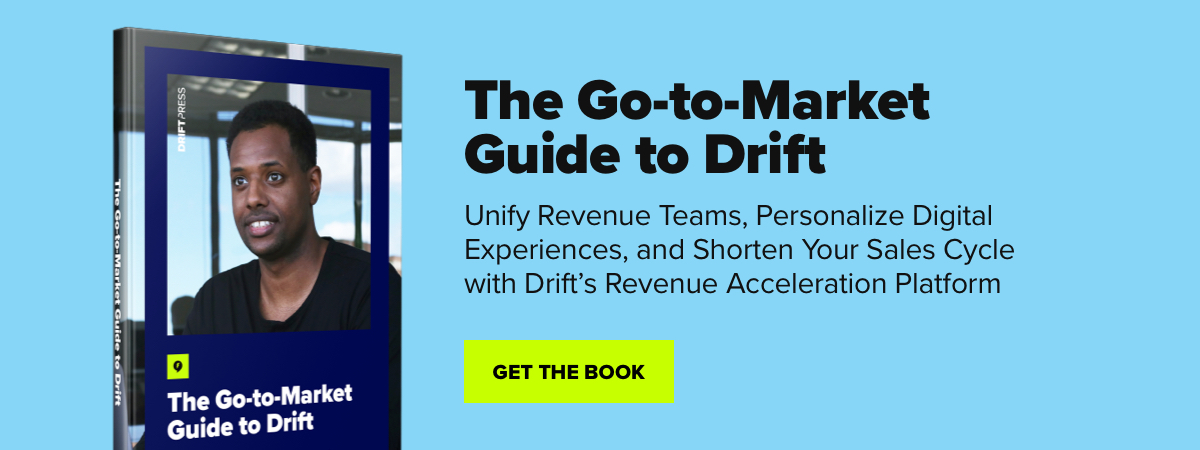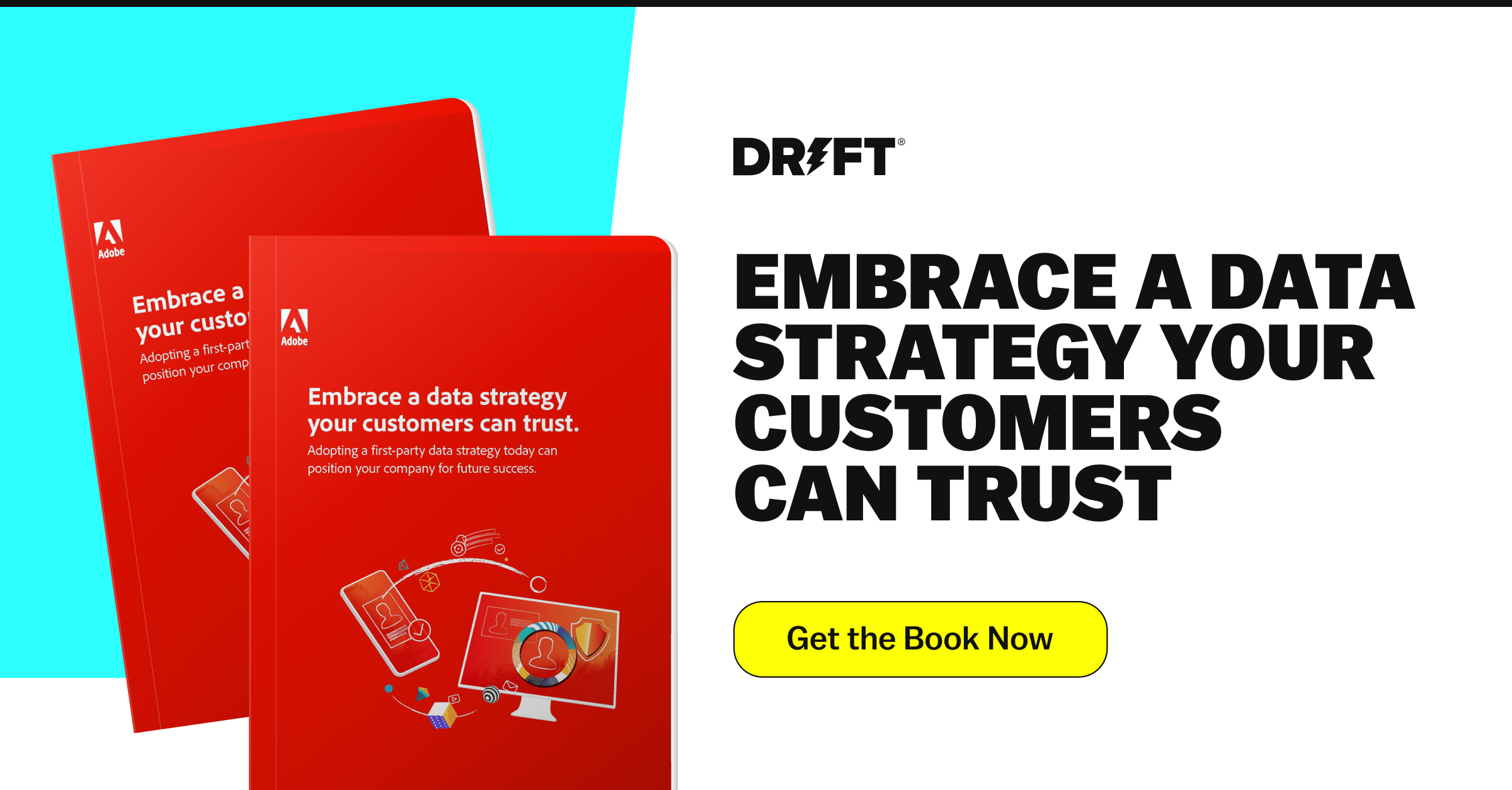We’re inching further into the twenties. We know how to manage COVID, how to work from home productively, and how to successfully bring back our favorite flare jeans.
What the rest of this decade has in store is anybody’s guess (and we’ll all be proven wrong if we dared an attempt).
But what we do know is what we don’t know.
As marketers, we don’t know how to hire great talent amidst this insane labor shortage. We don’t exactly know how to implement artificial intelligence (AI). We don’t know how to beat our competitors at account-based marketing (ABM).
The bottom line? 53% of marketing leaders say that generating pipeline is their top priority for next year.
That means overcoming our weaknesses is a must for marketing teams that want measurable revenue attribution.
Here are the top challenges we’ll be battling in 2022.
Hiring Marketing Talent
In Drift’s 2021 Marketing Leadership Benchmark Report, 60% of marketing leaders said that a lack of talent bandwidth is their top marketing challenge. This makes it difficult to execute just about any objective. Without the right people (and enough of them), you’re going to be behind on your goals.
In previous years, a lack of hiring budget may have been the top issue when it came to talent. But in 2022, it’ll be a lack of candidates saying yes to your job offers.
“Now is the time to really focus on your best talent and ensure they have the tools and resources they need. There are too many options in the market right now and good people are in high demand.”
For many workers in tech and other in-demand industries, the Great Resignation is more of a “Great Reconsideration,” with employees choosing workplaces that prioritize their wellbeing and pay well for their skills. Here’s what one CMO had to say about it:
“I think people are our most valuable asset — the technology, the media dollars, the messaging, etc. all need the right people to make them work. Prioritize attracting, hiring, training, and mentoring the best possible talent you can and as a leader, make this your #1 focus all the time. Through them, you will be successful.”
Creating Truly Great Content That Drives Pipeline
In Drift’s Marketing Leadership Benchmark Report, content marketing won big. Here are some stats to prove that marketing leaders have their eyes on content:
- Content marketing is the most common in-house marketing function, with 86% of marketing leaders saying so.
- 53% said content marketing will be the most important specialization to their team’s success over the next five years.
- From 2020 to 2021, content marketing software shot up from seventh to first in mission-critical martech for driving pipeline.
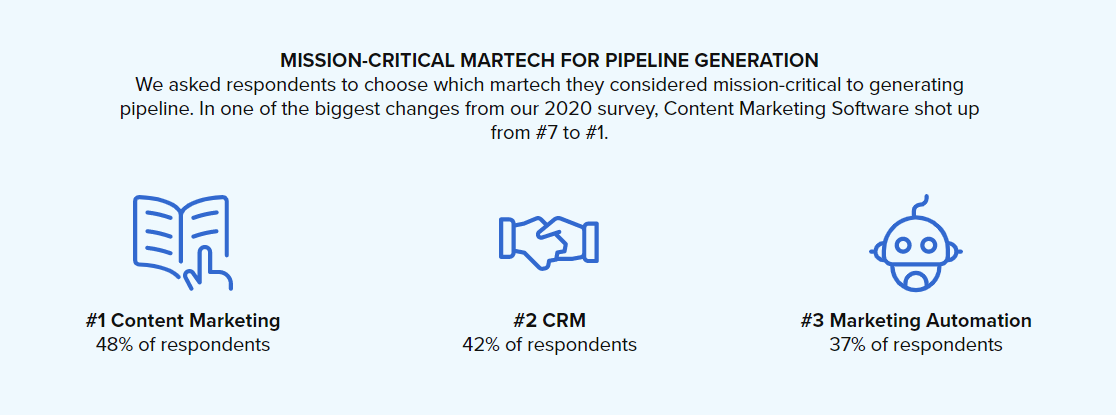
Hundreds of B2B companies have seen standout return on investment (ROI) from their content marketing, but there are still thousands more who have not. For them, creating content seems like a necessary evil — something they have to do in order to stay relevant, even though they’re not producing measurable results.
There are all sorts of reasons why generating marketing qualified leads (MQLs) with content is still challenging:
- Highly competitive niches and topics, especially for search engine optimization (SEO)
- Difficult to attribute leads to content (i.e. content might be delivering more than you think)
- Difficult to promote content
- Difficult to convert traffic from content into leads
- Disagreement and confusion over content strategy
B2B businesses want to get to the promised land where content marketing delivers more leads at a cheaper price than direct marketing or paid advertising. But to do so, they have to identify why they’re not getting leads from current content efforts and come up with solutions.
And even then, some marketers may still struggle to get buy-in for the resources they need to create truly great content.
Continuing to Digitize the B2B Buying Process
B2B buying is more digital than ever. For the last several years, the consumerization of business software has led to a bottom-up approach (meaning someone at a company can sign up for Slack, causing IT to go ahead and pay for it). But what’s happening now is different. More and more decision-makers are turning to digital methods to help them choose the right solutions.
Today’s B2B buyer is active. She’s pursuing multiple options, collecting requests for proposal (RFPs), comparing requirements, and reading reviews. She’s self-directed and doesn’t waste time. When a company takes too long to get back to her, there are two problems:
- She views it as a red flag that the company’s operations aren’t up to par and assumes support won’t be either.
- She moves on and engages with competitors who are faster to respond.
All B2B companies will face competition of some sort. With the consumerization of enterprise solutions, buyers expect to make purchases in a frictionless way. That’s why speed and ease matter.
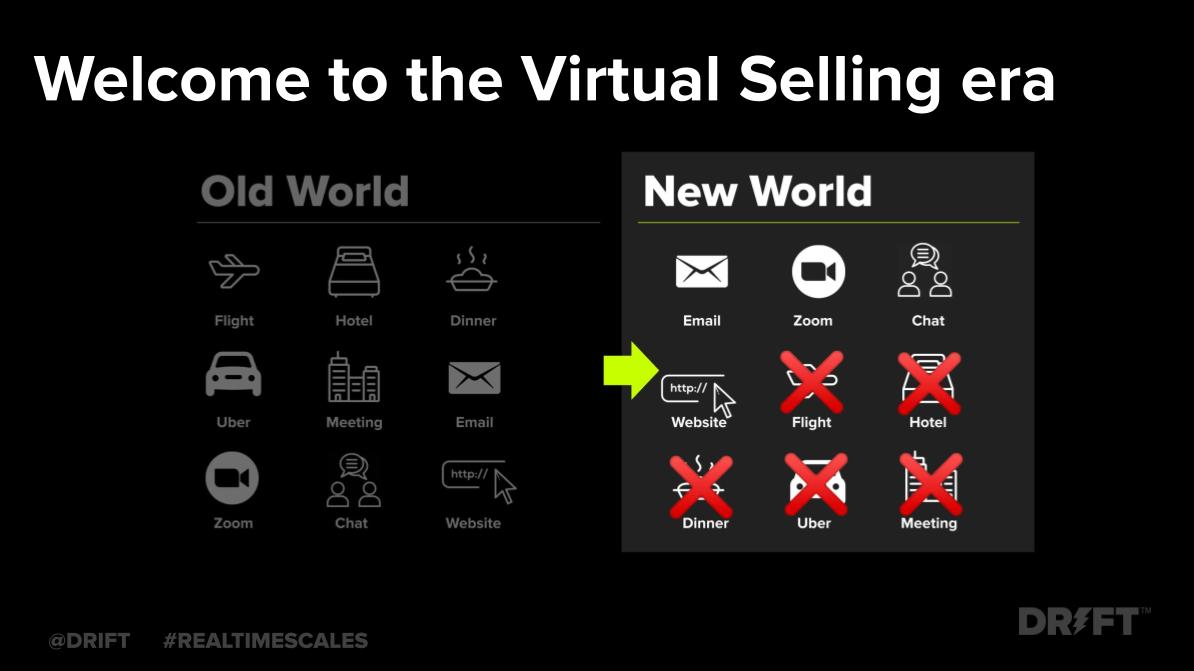
But B2B marketers aren’t quite keeping up with this digitization. In fact, overall frustration with the B2B digital experience is on the rise. Drift’s recently released 2021 State of Conversational Marketing Report shows that frustration with accessing basic business information has grown 20% in one year, while frustration with website navigation grew 25% and frustration with old school forms grew by 27%.
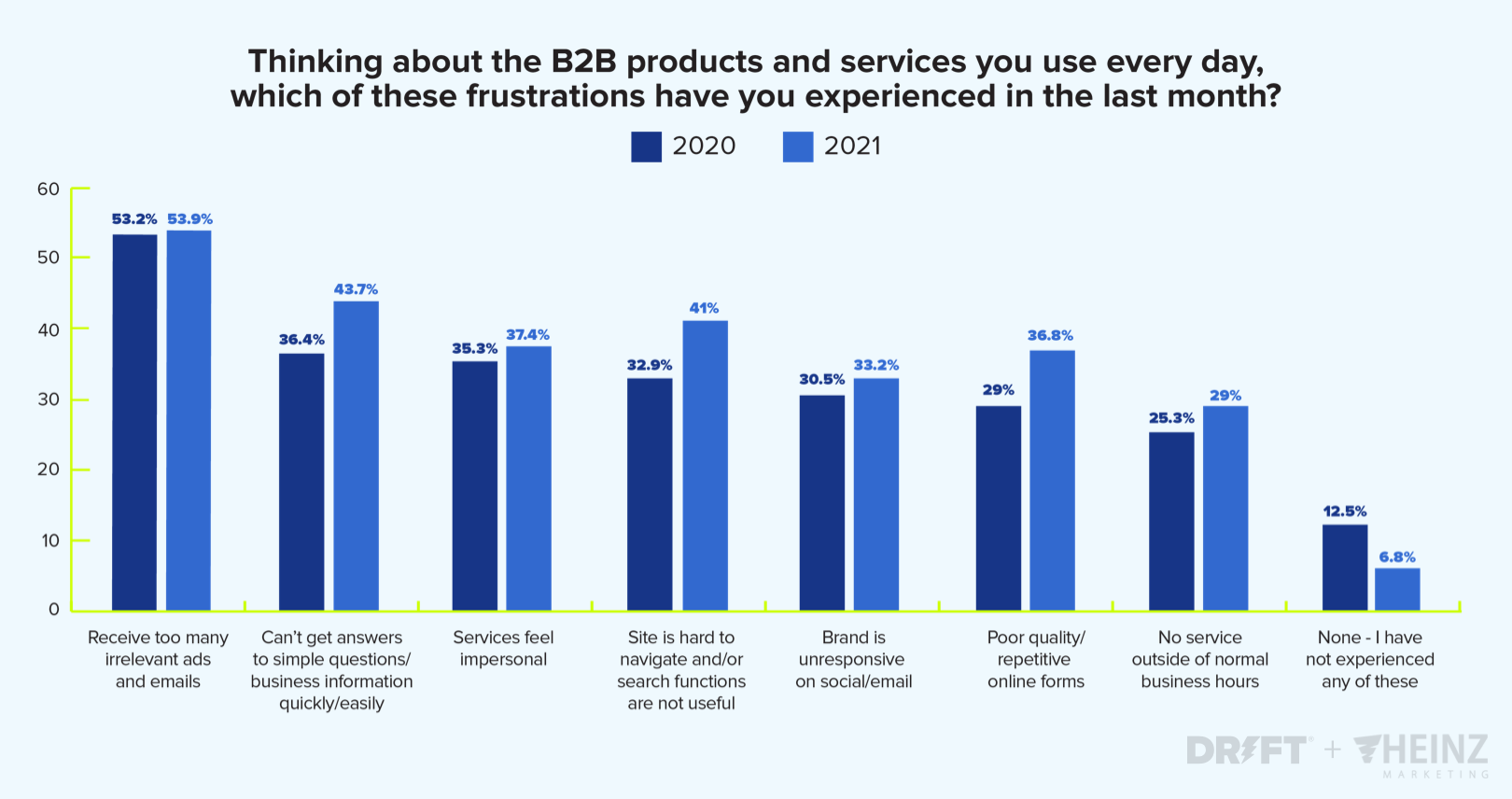
Because so many B2B interactions have moved online, we need to rethink every touchpoint that our buyers and customers go through.
Integrating and Analyzing Data Sources
Miranda Lambert’s song “It Takes All Kinds of Kinds” is very true in marketing. And in marketing, the kind of person we don’t have enough of is the kind who can aggregate and understand all customer and marketing data. As one marketing leader from the Marketing Leadership Benchmark Report commented about their martech:
“I don’t believe we are using our stack to its full capability — from segmentation to tracking to productivity. This drains resources and pushes our goals further out.”
In 2022, more marketers will seek to bring data analytics on board and upskill their current team. Because, if we fail, we won’t be able to make good on our revenue goals. But take that advice from one of the marketing leaders Drift surveyed:
“Develop analytical talent. Just about everything can be measured. It’s all about the numbers and the ability to report, read, recommend paths, and show ROI — all based on key performance indicators.”
Using AI for Repetitive Tasks (Not Creative Ones)
AI is on the brink of transforming the marketing landscape — but it hasn’t happened yet. As of now, 77% of marketers have less than a quarter of all marketing tasks intelligently automated to some degree. Though interestingly, 80% believe that more than a quarter of their marketing tasks will be intelligently automated in five years.
The challenge lies in determining which tasks should use AI and how. There’s a major initial resource investment, so you have to choose wisely. That means knowing what tasks shouldn’t be left to AI.
The team at Drift is a big believer in creative intelligence, a combination of five types of intelligence that enables people to become better problem-solvers, empathizers, and flexible workers.
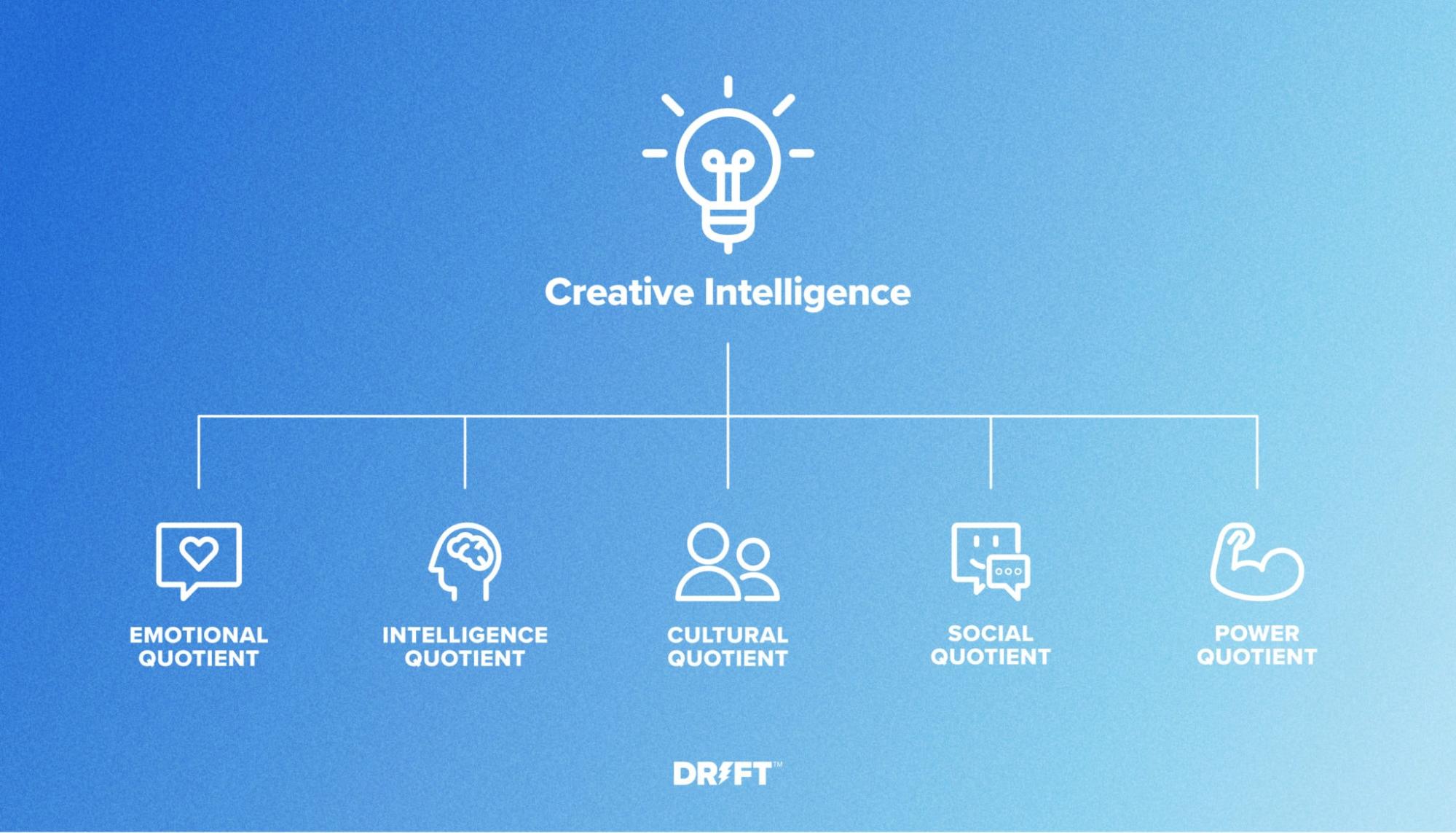
Creative intelligence is something that AI just can’t do.
When it comes to language generators like GPT-3, the writing just isn’t good yet. To put your AI to the best possible use, focus on streamlining your engagement with potential buyers. For example, you can use Drift Automation to answer questions and automatically qualify leads — without taking up any of your sales reps’ time.
“[We’re] automating tasks that used to take a long time to handle manually. We’re now able to pinpoint those customers we need to get our message in front of.”
A lot of the hype around AI is going in the wrong direction. AI is an extremely powerful tool for automatic tasks, like driving conversations, fueling engagement, and nurturing leads. But, when it comes to creativity, it just can’t beat humans. So, focus your AI on repetitive tasks and allow your marketers to spend more time working their creative intelligence.
Partnership in Go-to-Market Teams
For a long time now, marketers have understood the importance of collaborating with sales. But now, marketing and sales aren’t the only teams involved.
Revenue Acceleration isn’t possible without close collaboration between all go-to-market (GTM) teams, including sales, marketing, product management, operations, and customer success.
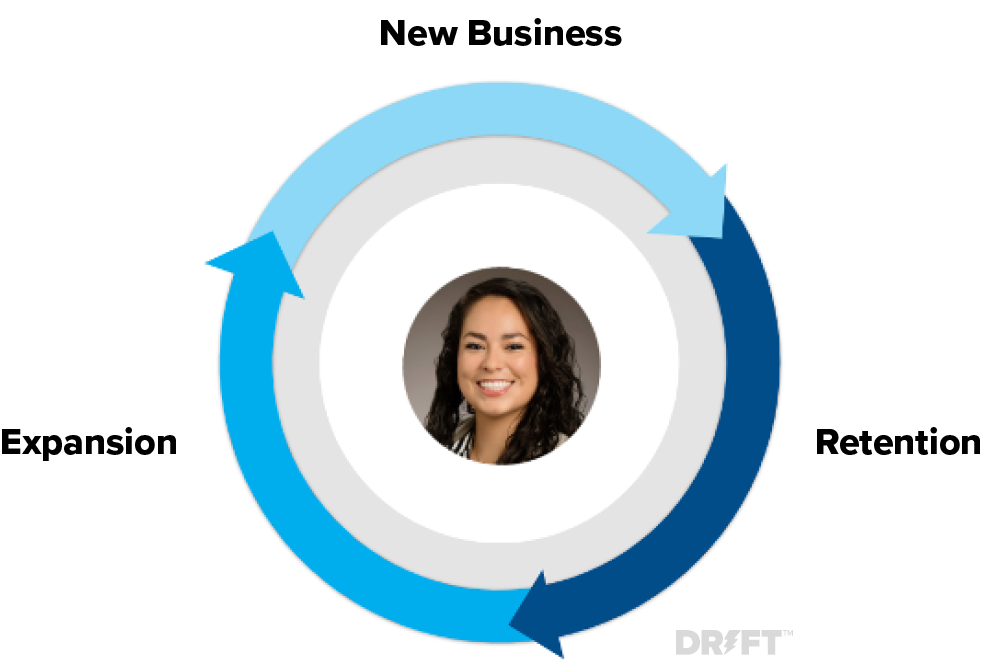
One of the best ways to align GTM teams is to get them working in the same place. Marketers can use Drift to scale conversations with customers, gain insights into site visitors, customize messaging, and design better ABM campaigns. Sales can use Drift for live data enrichment, lead activity notifications, and sales conversations. And customer experience teams can use Drift for connecting with and understanding accounts.
The magic really happens when you not only align, but also action your GTM teams around the customer.
“Unifying your core metrics in this way is necessary to solve the disconnect between marketing, sales, and [customer success]. Once teams have a single source of truth around metrics and data, instead of debating who’s got the right number or why the data doesn’t match up, companies can identify deal risk and upsides, accelerate current quarter pipeline, and accurately predict revenue and forecast future quarters.”
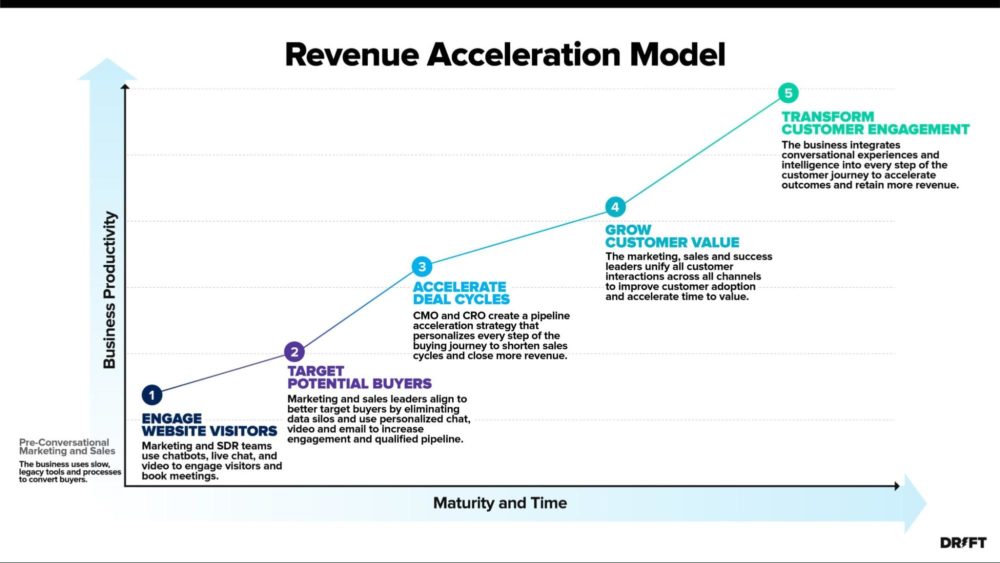
On a foundational level, everyone needs to be working towards a common goal. A chief revenue officer can define the metrics that the teams will track together. This ensures that your GTM teams have an overarching goal and a shared language — instead of staying in their wheelhouses and tracking micro metrics (like conversion rates or show-up rates). It’s important to track the big metrics together (like revenue and win rate) and then figure out which micro metrics affect them.
With the right metrics in place — and a CRO or GTM executive leading the interdepartmental partnership — GTM teams can tackle the right initiatives to move the revenue needle.
Hosting Virtual and Hybrid Events That Your Audience Will Love
Virtual events aren’t going anywhere. That level of convenience is sticky.
At the same time, many of us are craving in-person experiences, particularly Gen Z employees, extroverts, and those who have benefited from IRL connections in the past and want more. In 2022, you can expect to see more companies opting for hybrid events, particularly companies that want to solidify their local presence in important geographical markets.
But in-person events are costly, which is why most companies will continue to opt for virtual. Unfortunately, some marketers are still struggling to get results from their virtual events.
Whether you’re going for virtual or hybrid, content is king. When running virtual events, the marketing team at Drift found that high-impact content was the most important tool for increasing sign-ups and show-up rates. One landing page saw a 86% conversion rate by focusing on an expert topic rather than beginner content:
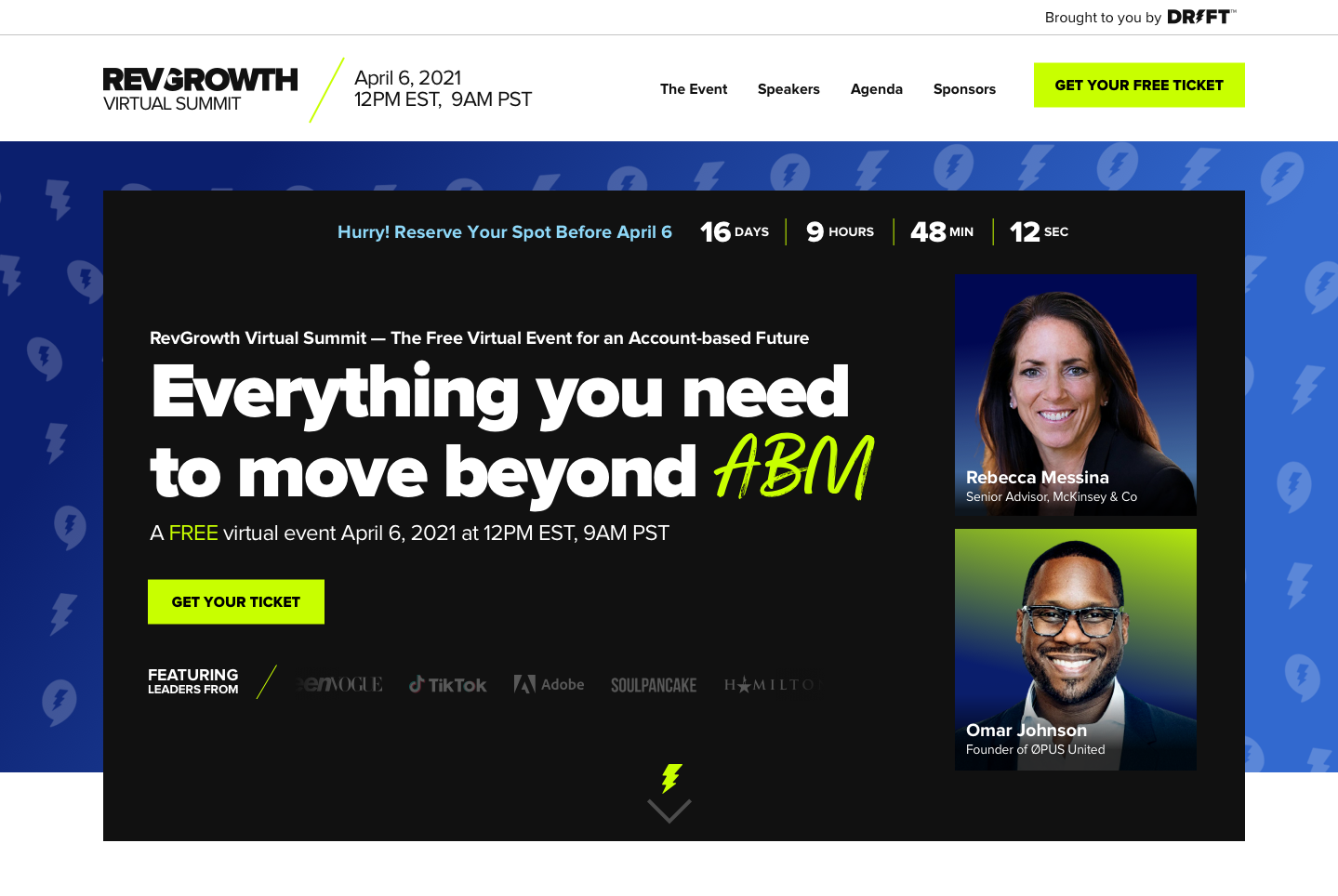
With enticing content at the forefront, the next step is finding ways to engage attendees. Here are some of the most effective strategies I witnessed while attending Impacting Millions Live recently:
- Truly live: There were no recordings or replays, and the event was intended to be truly live. While this was challenging for some based on time differences, it also ensured maximum attendance and created a truly live experience that I’ve never experienced at a virtual event. Around 500 people had registered, and any given session had around 350 participants in the Zoom. You can imagine the live attendance level would have dropped had there been replays, and the event’s vibe would have changed.
- Prizes: At the end of every session, there was a random prize drawing from all of the attendees. You had to be live on the Zoom to claim your prize or someone else would get it. Since there were great prizes (like a MacBook Air), this also increased attendance and made the experience fun.
- Stage hype: The conference was run like a live event. There was break time music and when someone was going to “come on stage,” the music would change before the energetic host introduced the speaker. An intro reel for each speaker, showing them in photos and videos on real stages, was played before their session.
- Breakout sessions: The event also made use of Zoom’s breakout room feature, splitting attendees into a small room of people for a short period of time (typically 10–15 minutes), so everyone could talk about what they had learned. People were also encouraged to connect with their breakout partners in the pop-up Facebook group.
When using these tips, keep in mind that your event doesn’t have to be two days. It doesn’t even have to be one full day. It can be an hour-long webinar, and you’ll still see results.
Catch up on all sessions from RevGrowth here.
Understanding the Individual Customer Journey
41% of marketing leaders chose lack of insight into the customer journey as the second greatest challenge for their marketing teams.
Understanding the customer journey as a whole can help marketing teams make better decisions and find out what parts may be lacking meaningful content or optimized touchpoints.
But even with the most accurate map of the customer journey, you’ll still need to be able to track individual buyers as they go through the journey and communicate with them accordingly.
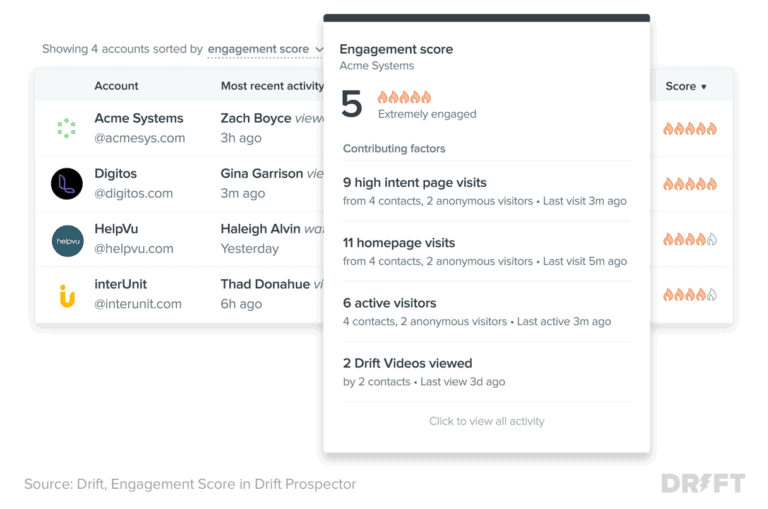
Implementing tools like SnapApp, OneSpot, Evergage, and GoSquared can help collect website user data and automate personalized campaigns. But selecting the right tool is only half the battle. Because individualizing your marketing efforts is typically time-intensive, you’ll need to prioritize opportunities and ideas, group individuals into smarter customer flows, and create new key performance indicators (KPIs) to help you measure your success.
Winning with White-Glove ABM
Account-based marketing (ABM) is a brilliant way to secure your biggest deals — but many companies don’t treat their top accounts with as much care as they should. Instead, they serve these accounts using the same nurturing materials that their inbound leads receive.
When you take a white-glove approach to ABM, you increase your chances of booking calls with decision-makers at your top accounts. A true white-glove experience should include the following:
- The right campaigns: Create events and marketing campaigns that match the ABM strategy for that account (i.e. one-to-one, one-to-few, or one-to-many).
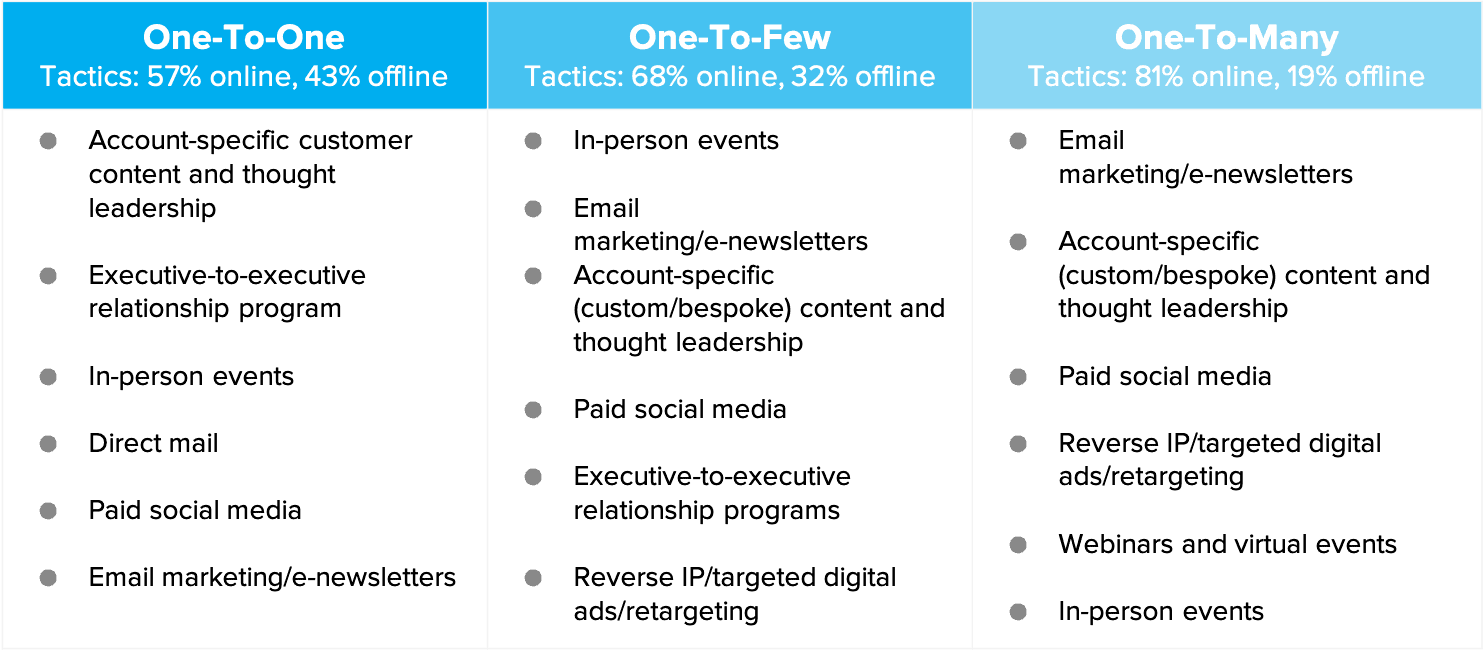
- Live insights: Use Drift to deliver notifications to the dedicated account owner when someone from the target account is visiting your website. This way, the account manager can reach out to them in real-time via live chat.
- Digital experience personalization: Create personalized digital experiences using a tool like Optimizely that caters landing page content to decision-makers.
- The right team: White-glove ABM requires input from lots of sources, such as content managers, digital marketers, sales reps, business development reps (BDRs), marketing operations, and field marketers. Pool together the talent you already have in the marketing and sales departments to start targeting specific accounts, instead of just specific audiences.
For more insights, grab our book The Art of ABM: A Strategic Guide to Account-Based Marketing.
Attribution
When he spoke at the Growth Marketing Conference in 2018, Tyson Quick said, “Attribution is the greatest unsolved problem in marketing.” Unfortunately, this is still true.
CMOs might know what percentage of conversions come from direct traffic to the home page, but they don’t know how that traffic heard of them in the first place. What made the visitor search their brand name or navigate to their website?
Within the complex digital landscape, it’s just as hard as ever to attribute conversions and sales to individual campaigns. Plus, you may need multiple campaigns to convert someone into a customer and you may have multiple touchpoints in a single campaign. It takes an average of seven interactions for a B2B buyer to buy, and you might not even have a lead on your radar until they’re already 57% of the way through the buying process.
The difficulty of attribution isn’t going away anytime soon. Instead, marketers will have to create clearer goals for each campaign, based on the customer journey and the buying process.
Being Human
Vulnerability is still trending. Brené Brown (love her) has made an entire business out of vulnerability — teaching us all how to stop shying away from our vulnerability and instead share it with others.
Meanwhile, the B2B landscape is crowded and competitive. The consumerization of B2B solutions has upended how individual buyers research and make purchasing decisions. With very little top-down sales and decision-making, suddenly the dozens (or even hundreds) of people in an organization are potential champions and advocates for your product.
In noisy, crowded, and competitive spaces, vulnerability has the power to cut through the clutter and make a human connection between your brand and your audience.
Marketers have accepted this truth for years now: People buy from people (yes, even in B2B). And yet, so many companies still struggle to put all of this knowledge into action. They struggle to humanize their brand and be more vulnerable, even if doing so will help cut through the noise.
Organizations struggle to be human because it’s not how they’ve done it in the past, and they just don’t take the time to do so going forward. That’s a miss — because this is more than a marketing trend. This is a shift in how people interact.
Some smart ways to be more human as a B2B brand are to encourage employees to build their own personal brands, support and grow employee advocacy, and highlight real people in your content. A few ways you can achieve that are by having employees author blog posts, present on webinars, and share company updates from their personal profiles.
When you humanize your brand, potential customers pay more attention to your content and relate to it.
Remember that being human isn’t just about what you share, but also how you respond when others share. In a recent LinkedIn post, Diversity, Equity & Inclusion Strategist Lily Zheng reminds us that validating others’ experiences (instead of questioning them or writing them off as anecdotes) is the best way to help people feel heard and seen.
Not Getting Distracted
In 2022, there will be new hacks and strategies that you’ll be itching to try. You’ll find a tutorial that promises rapid Instagram growth. You’ll read an article that declares that B2B marketers need to get on TikTok, or that direct mail is back. You’ll want to add new landing pages before your lead flows are optimized.
All sorts of new ideas will be thrown your way. That’s nothing new. But the excitement of a new year could make shiny object syndrome even more intense, so be on the lookout. You’ll want to document your marketing strategy, follow it, and update it as needed instead of blowing with the wind.
Final Thought
From hiring talent and winning with content to personalizing and automating the customer journey, 2022 will present enormous challenges to B2B marketers. And the most important challenge of all will be focusing on the customer in everything you do. If you can do that though, you can do anything.
And don’t forget to save room for cookies. Check out Drift’s ebook with Adobe on how to develop a top-tier first-party data strategy.
Dayana Mayfield is a B2B SaaS copywriter and content marketer who lives in Northern California. She loves data-driven marketing and storytelling alike.
Editor’s Note: This article was originally published in November 2019 and has been updated to reflect new information.





